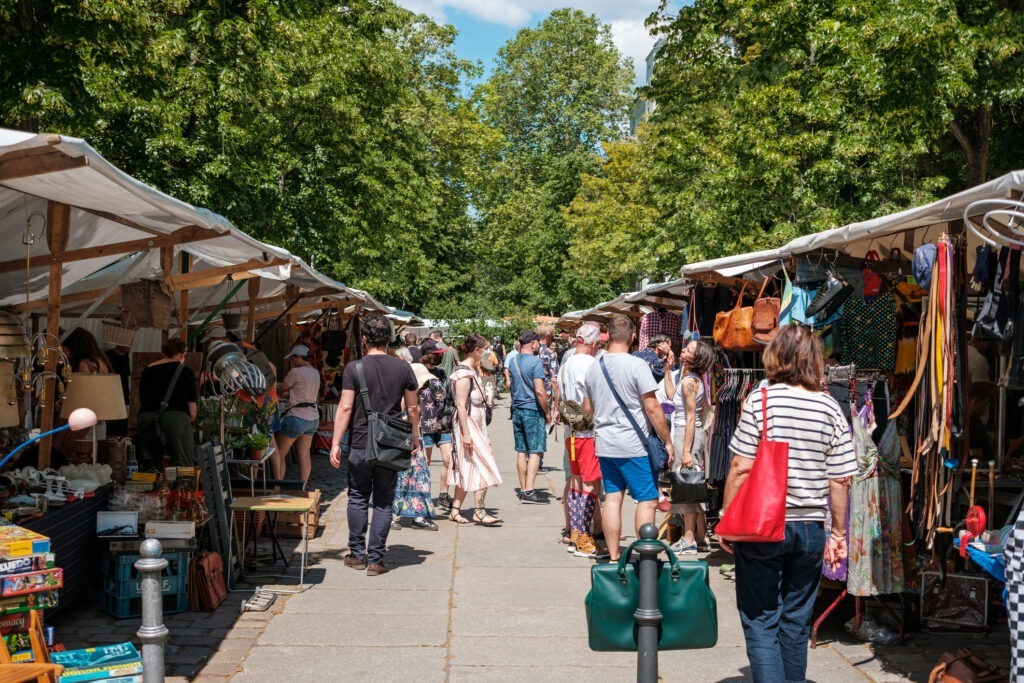On a fine day, a sizable, long-running flea market will draw hundreds, and perhaps thousands, of people. The diversity of items you can find in flea markets can bring confusion and a headache. To help you avoid this nightmare, let’s break down those things to remember when purchasing products in a flea market.
What is a Flea Market?
A flea market is typically an organized outdoor activity or bazaar where people can sell, swap, trade, barter, or buy vintage, used, antique, or new items. In addition to stalls, you may also find vendors displaying their wares on tables, ground, or trucks selling items such as furniture, plants and produce, appliances, household items, clothes, tools, and other cut-rate goods.
The flea market was traditionally seasonal. However, because more people prefer items from this market, casual and formal markets where flea markets are held indoors have been developed.
Some people may find flea market adventure intimidating, with many vendors and stuff to choose from. It’s more of a treasure-hunting scenario but only with more treasure finds plus competition with other treasure hunters. Let’s dig into some useful tips before your flea market journey begins.
Do your research before going to any flea market.
Put a little work of research before planning to head out for flea market fields. For beginners, flea markets can be overwhelming. Thus, finding nearby flea markets online would be better to save time. Some of the best flea markets are small, so search a list of flea markets and what items they offer.
Prepare your list
Think of a flea market as a shopping marathon where everyone is on their top game. Make a list of the items you are targeting to purchase, and if needed, research the “going rate” of the things you are looking for.
Go early and bring your vehicle if possible
The devoted shoppers arrive early, and the first hour of the bazaar activity is when a lot of the nice things are sold. It might cost extra to get in early, but it’s worth it to find the best items, avoid the crowds, beat the heat, and park closer to the area. Bring a car that can easily transport your big finds home if you have the chance.
Wear fitted, comfy clothes and bring extra bags
You never know where the flea market will take you and where you must try some amazing dresses. Wear clothes that fit your body and try them on the spot. Changing rooms are rare, and bathrooms are usually large and rarely in between. You can wear leggings and a tee top. This way, when the perfect piece appears, you can quickly undress and put it back on without showing too much skin.
Moreover, consider bringing one of those foldable shopping bags to tote your wares. You must ensure those items can hang for the whole day and can easily be carried without breaking them. Additionally, bring water and wear comfortable shoes.
Bring cash
Another thing you must remember to bring to any flea market is cash. Most flea markets have ATMs. However, looking for cash machines may be a waste of time. Other vendors accept credit cards, but if the vendor only accepts cash, you could take advantage of a great find by buying it immediately. Also, bring smaller bills to avoid wasting time asking for a change.
Negotiate politely and smartly
Making a friendly deal with a vendor goes a long way. Asking what the best prices are maybe a cheapskate move, but it will make the seller feel you are interested in the item and willing to meet halfway. Negotiate smartly where the whole game is for both you and the vendor to win and get a good deal. The key is knowing the item, how much it traditionally costs, and being fair with the offer.
Further, look towards the back of the stand; some closed boxes still about to be displayed have the best purchases and need more effort to find. The real treasures are always deep in bins, hidden under blankets, or on random bike wheels. It’s always a good idea to ask a vendor if they have what you’re looking for.
Always do a quality check of any purchased item
While there are certainly some things that are easy to overlook, always look for things indicating poor quality or excessive use of the item, as you don’t like to regret your flea market item finds. Feel free to pick up the item, test it, flip it over, and look for quality marks. Take the opportunity to talk to the vendors and learn more about what you are buying.
Consider going to a flea market on a cloudy or rainy day
This tip may seem tricky, but intentionally choosing a not-so-bright day for a flea market may work to your advantage. Dealers in flea markets are keen to make a profit and want it fast and easy, especially when heading toward the middle of the day. They want all their stuff to be gone before messing them with pouring rain. Plus, competition from other buyers will be lesser, so you’re more likely to choose from the best rather than leftovers.
Conclusion
Exploring a universe with various items in a flea market can be an overwhelming shopping expedition. There are numerous things to see and buy, but the most important is going home after your flea market journey with the feeling of satisfaction that you bought what you need and want at reasonable prices. Also, remember that you are buying from local vendors who may have deep connections to the items they sell. Helping them out for a good cause brings relief for spending.
